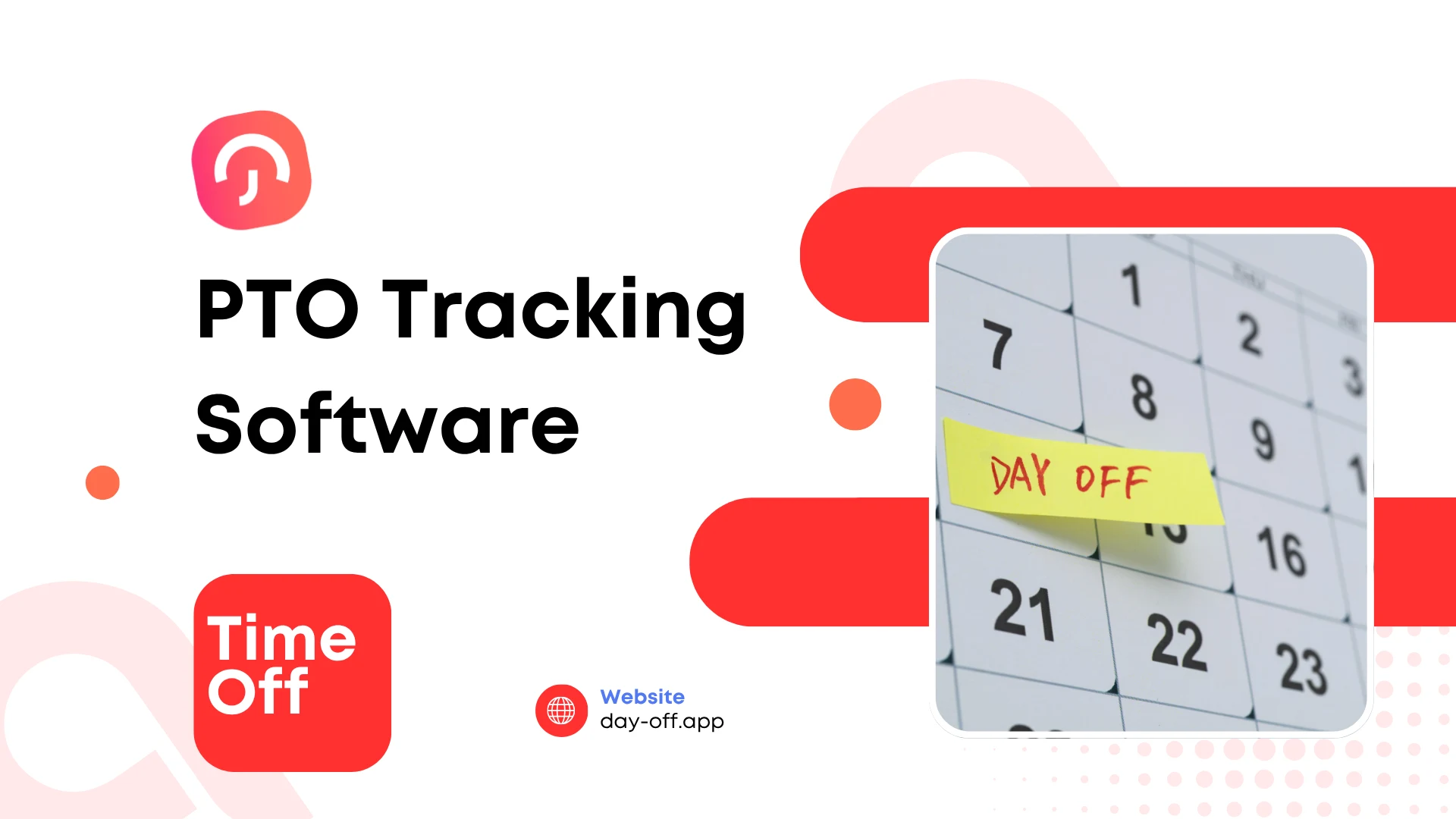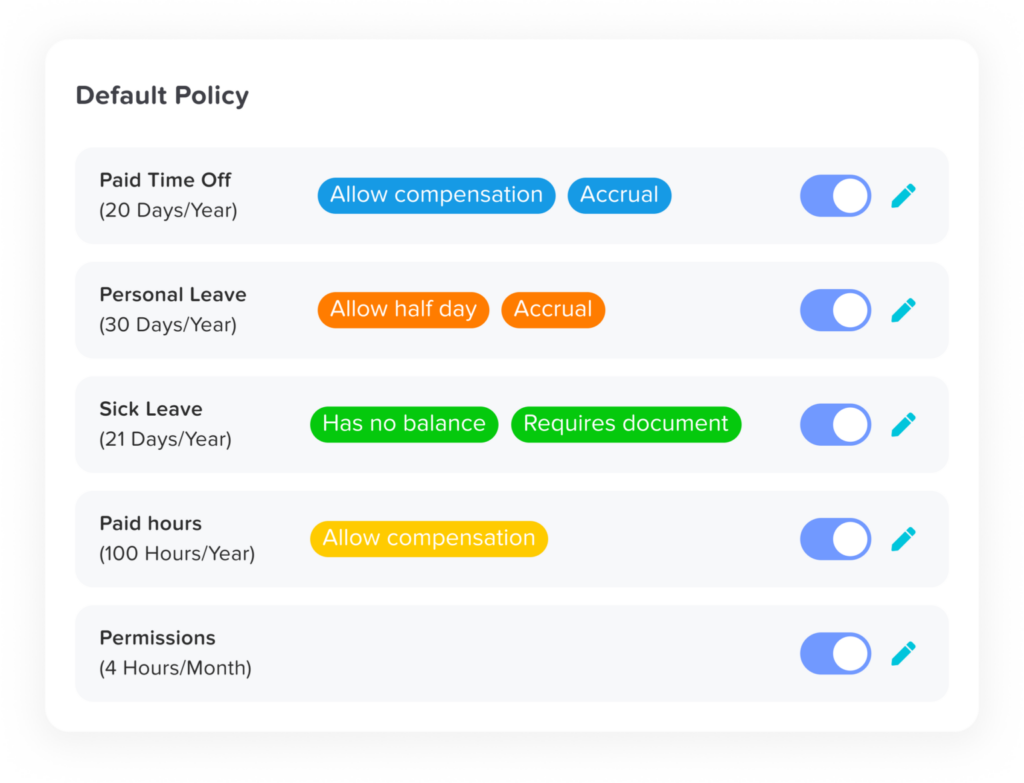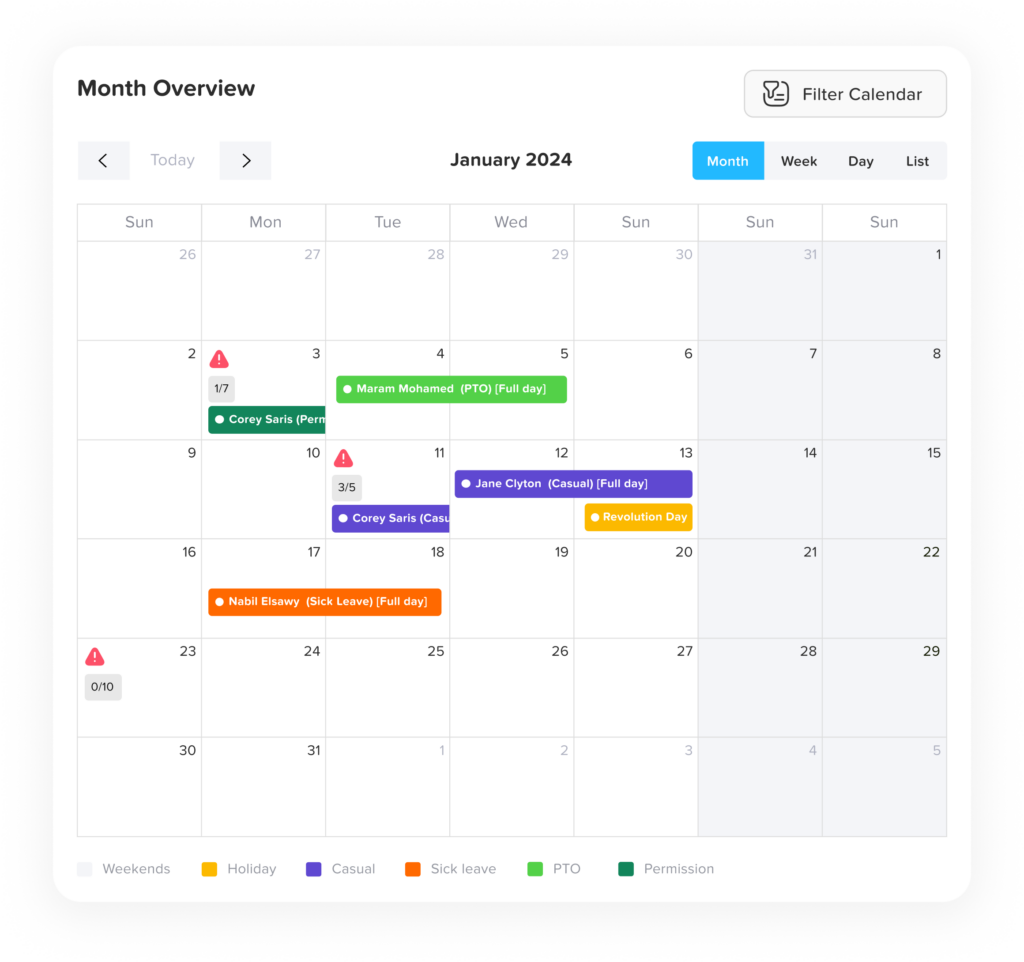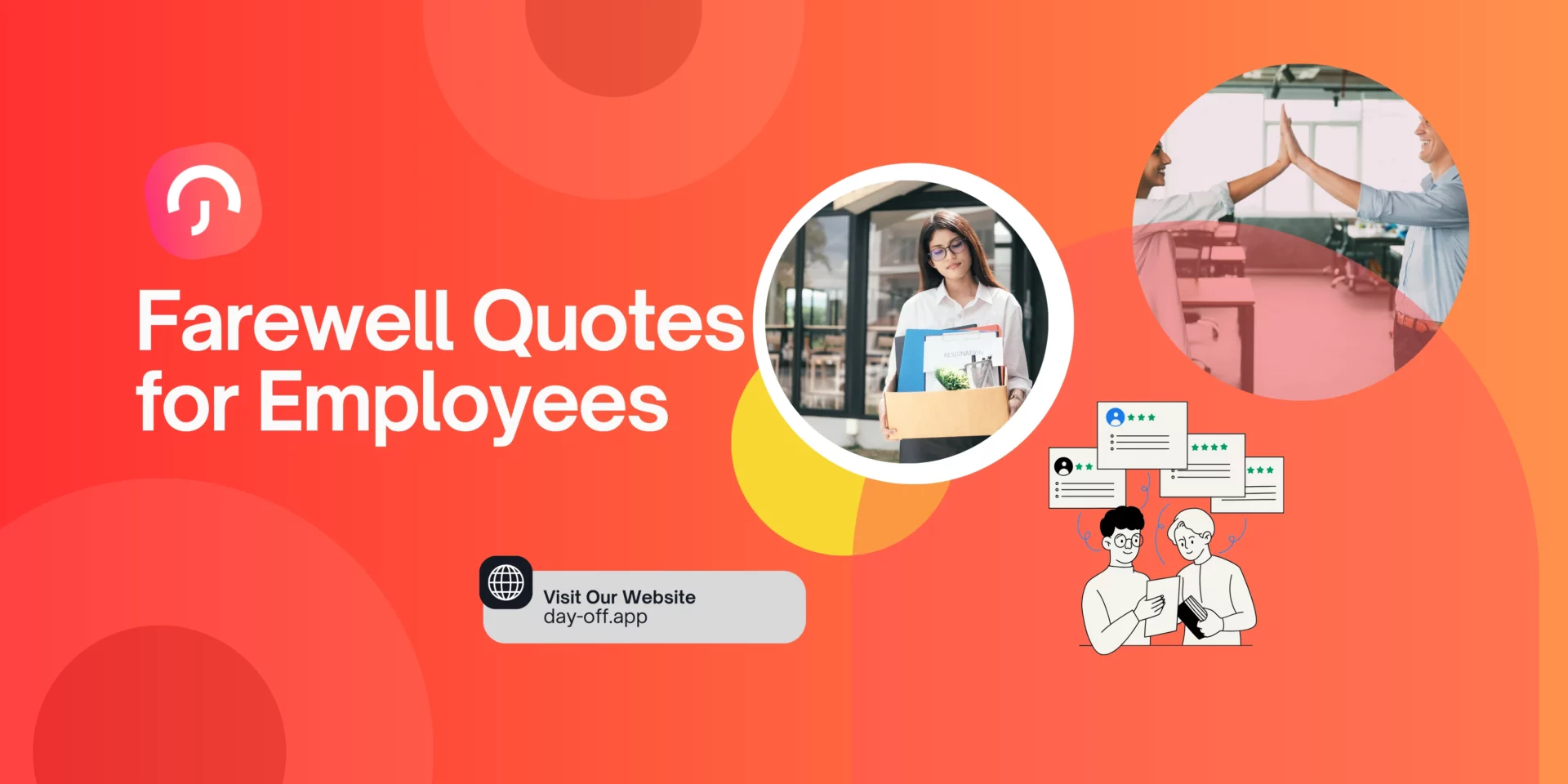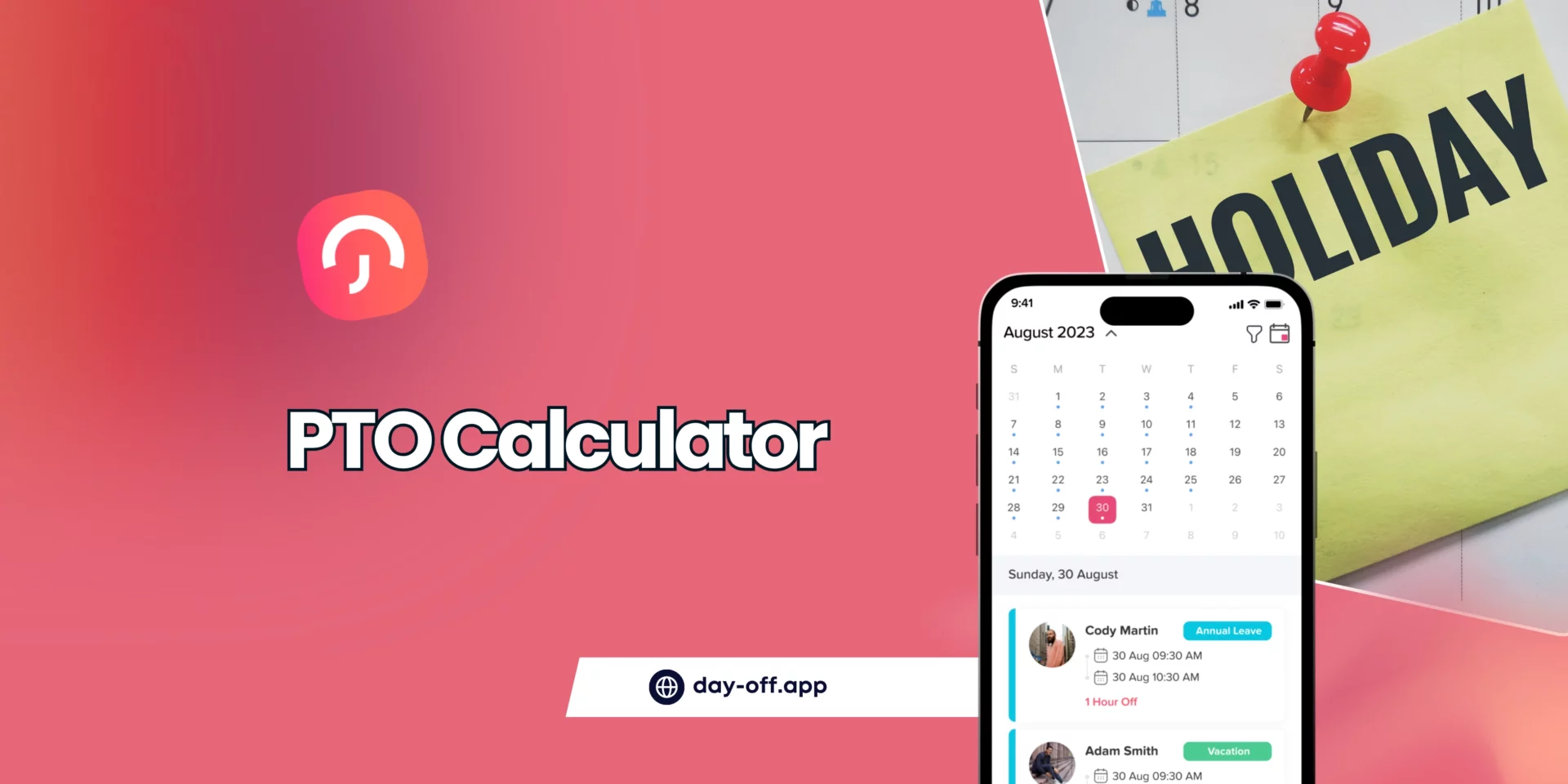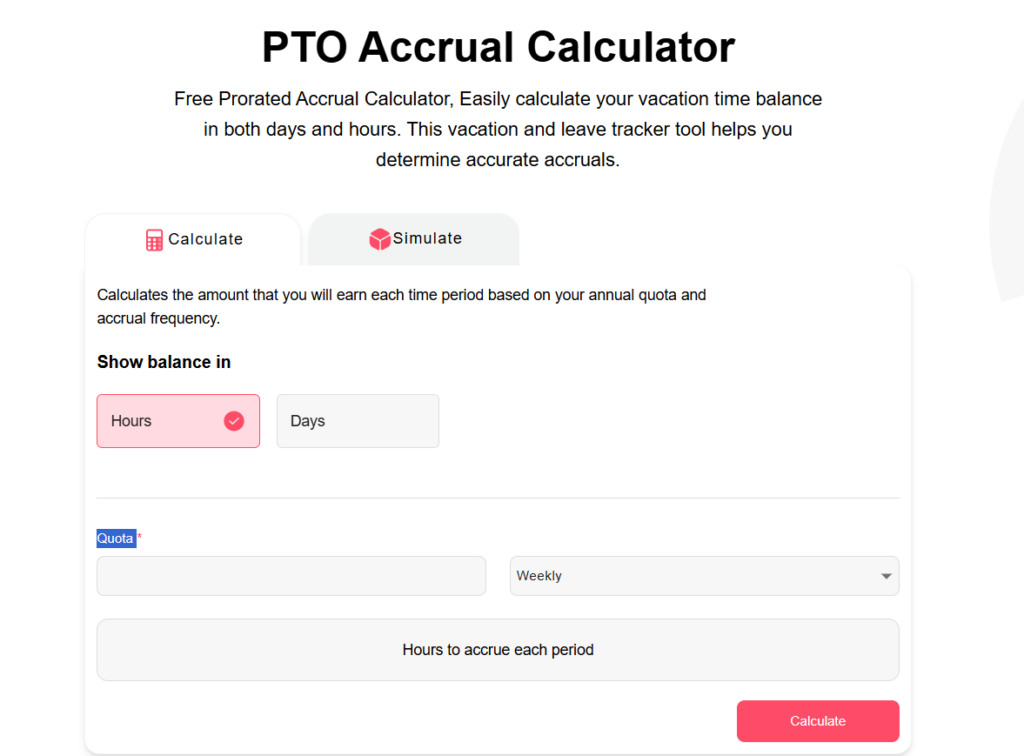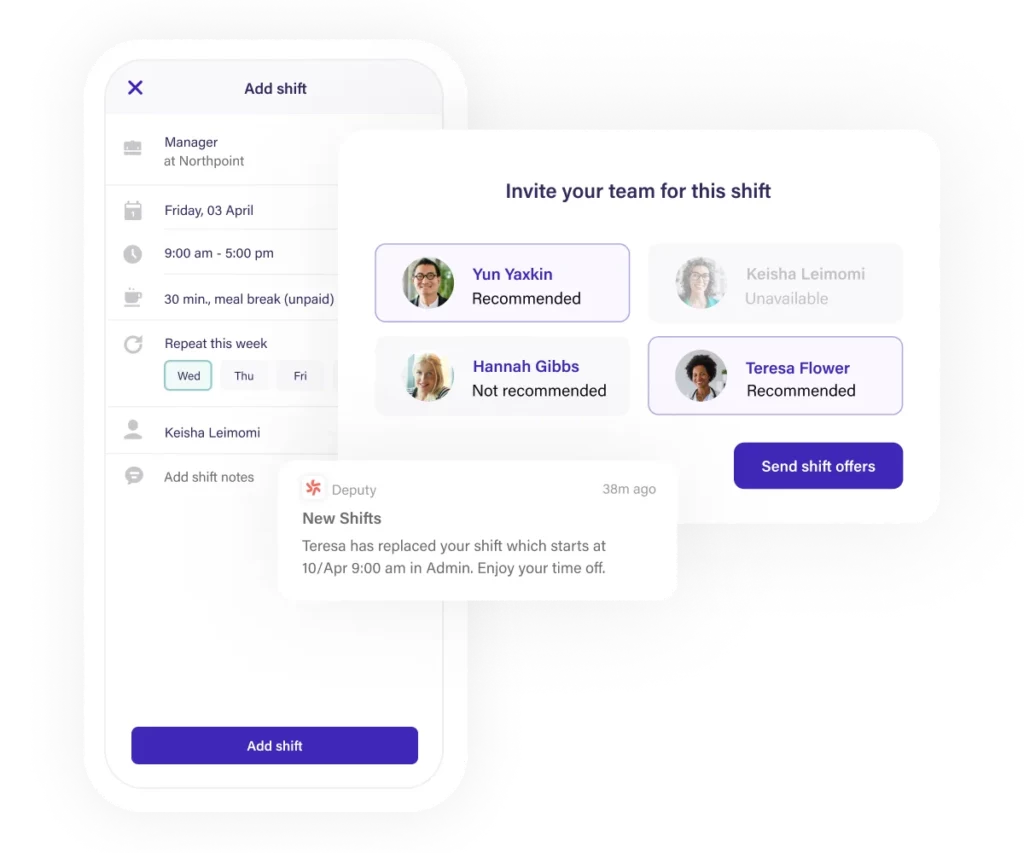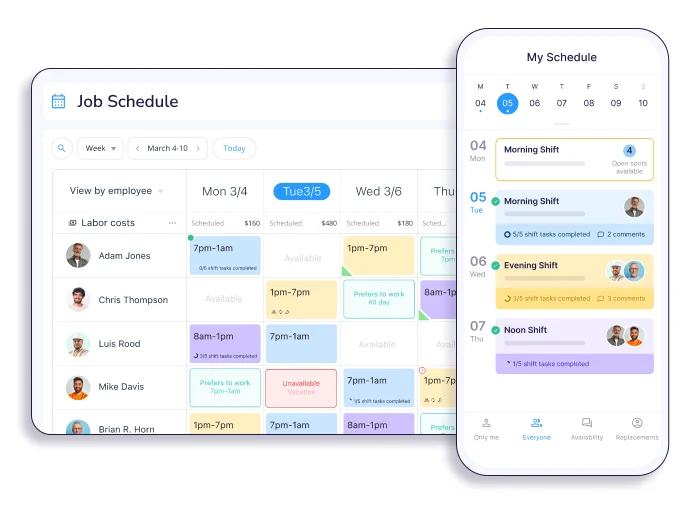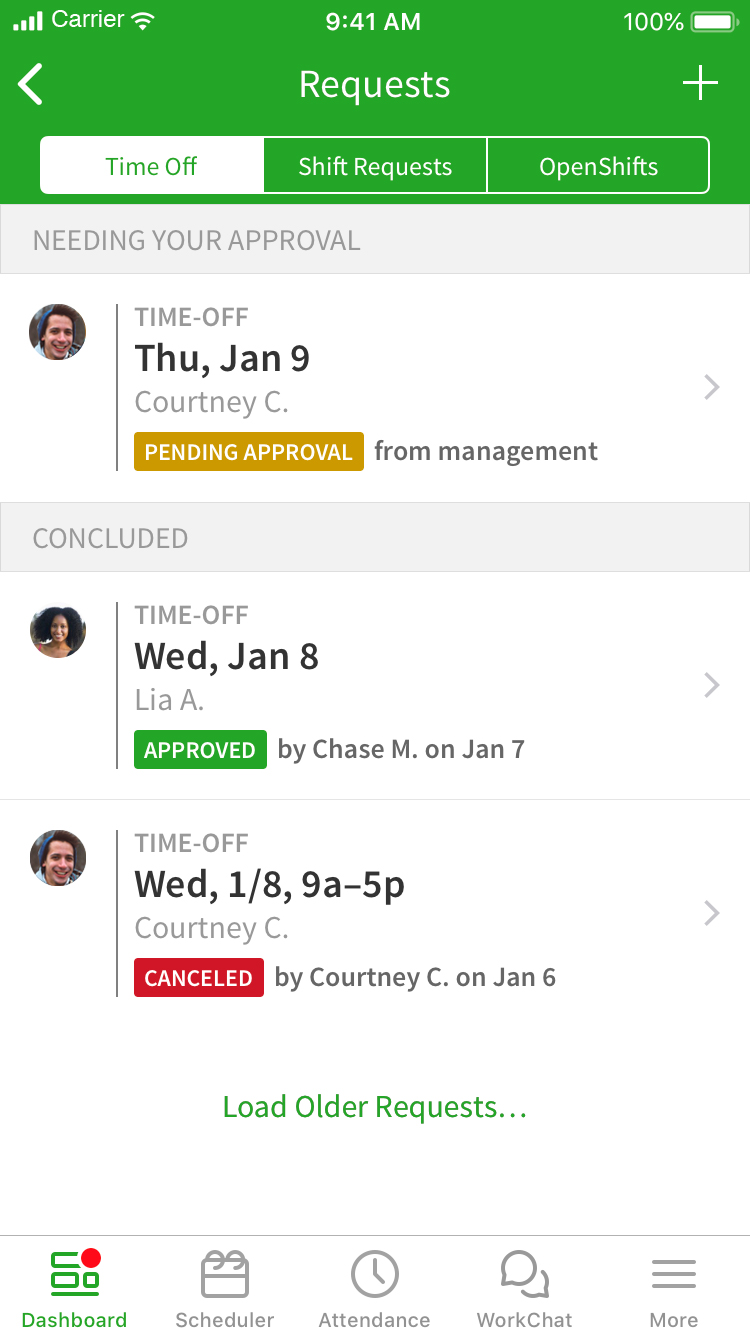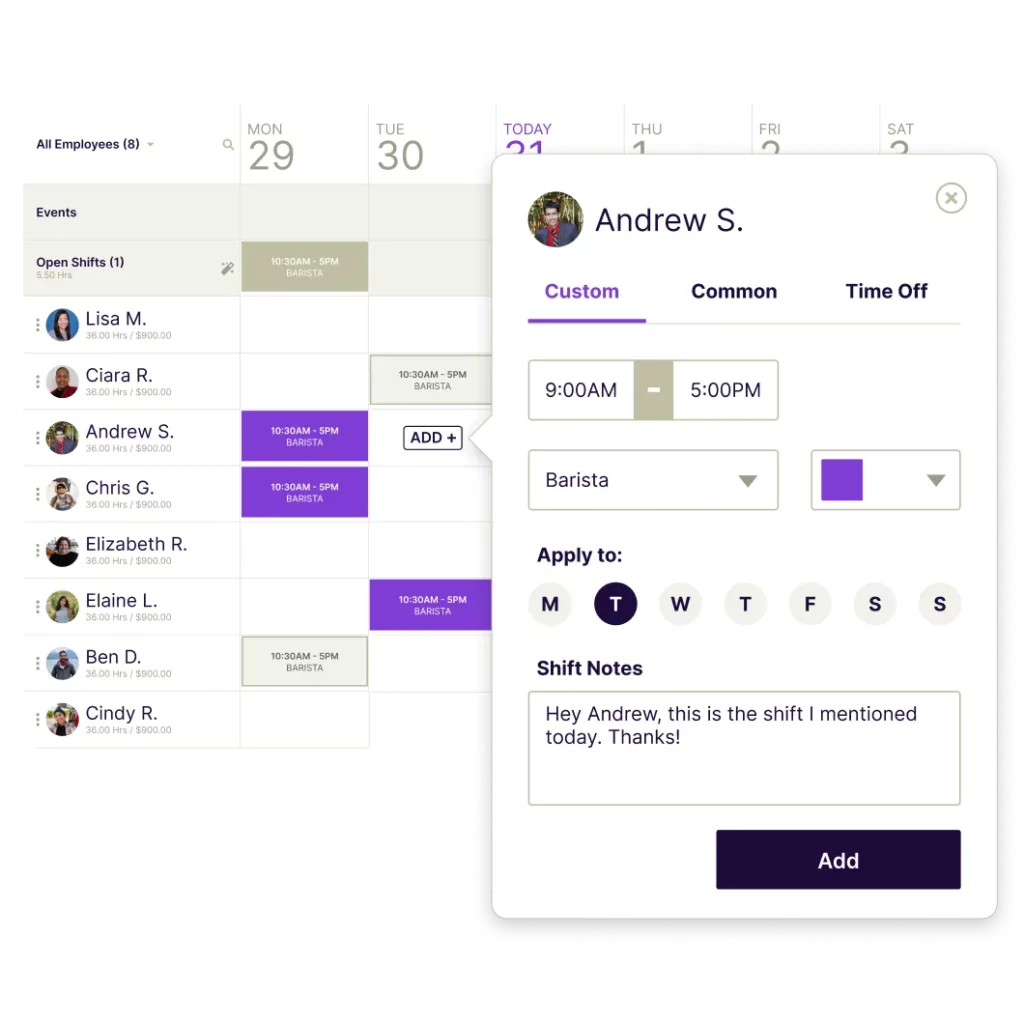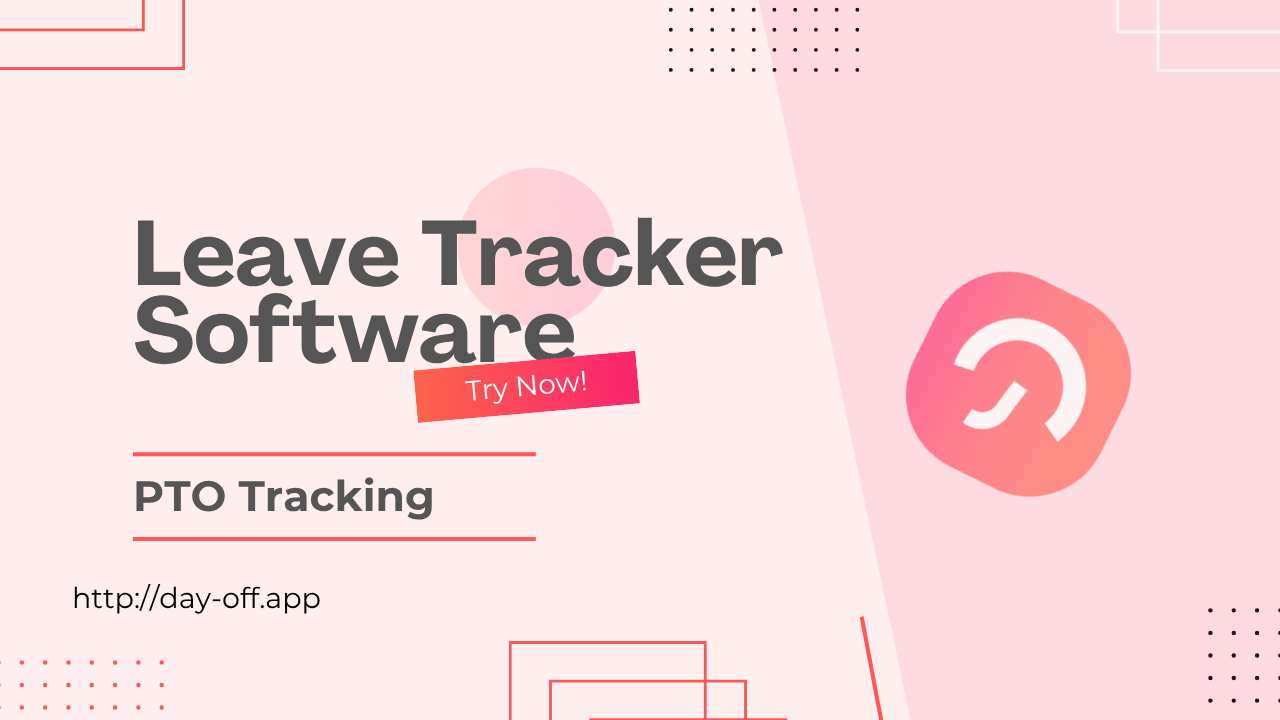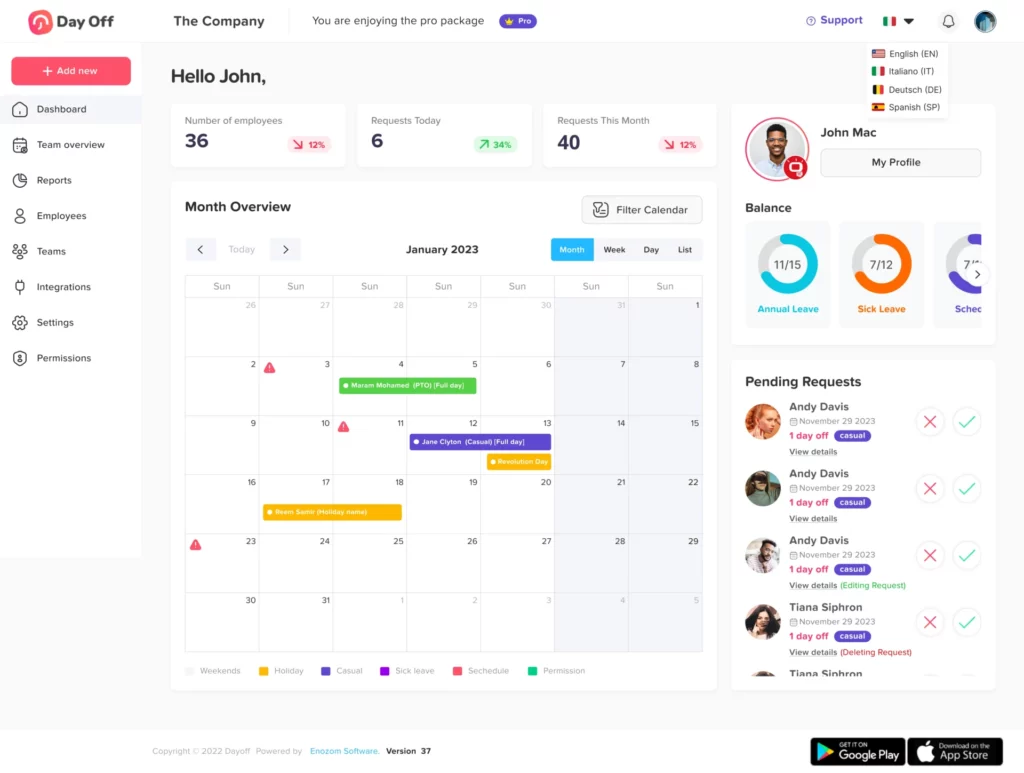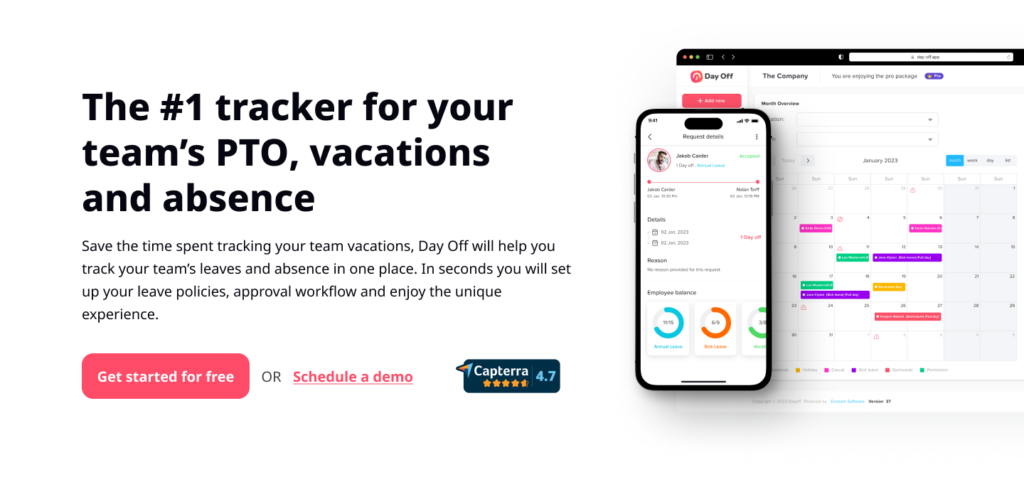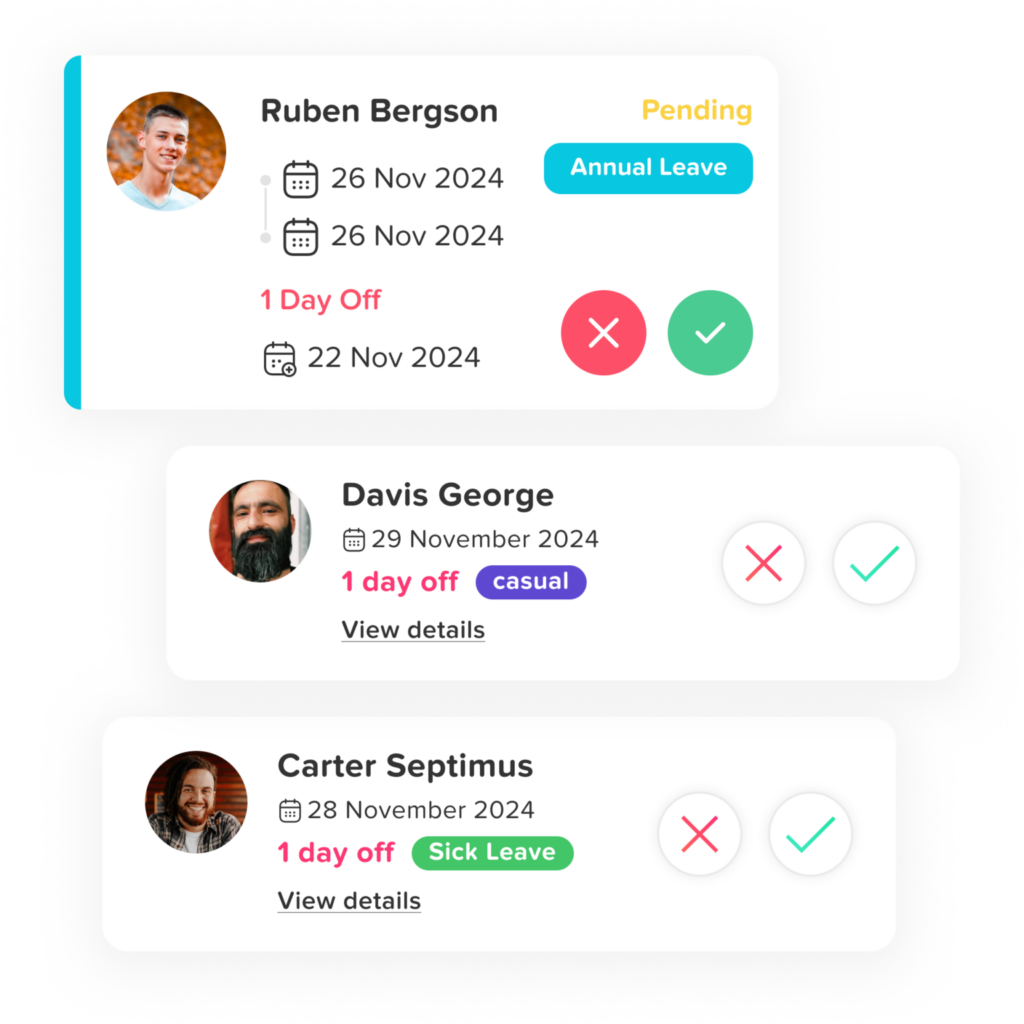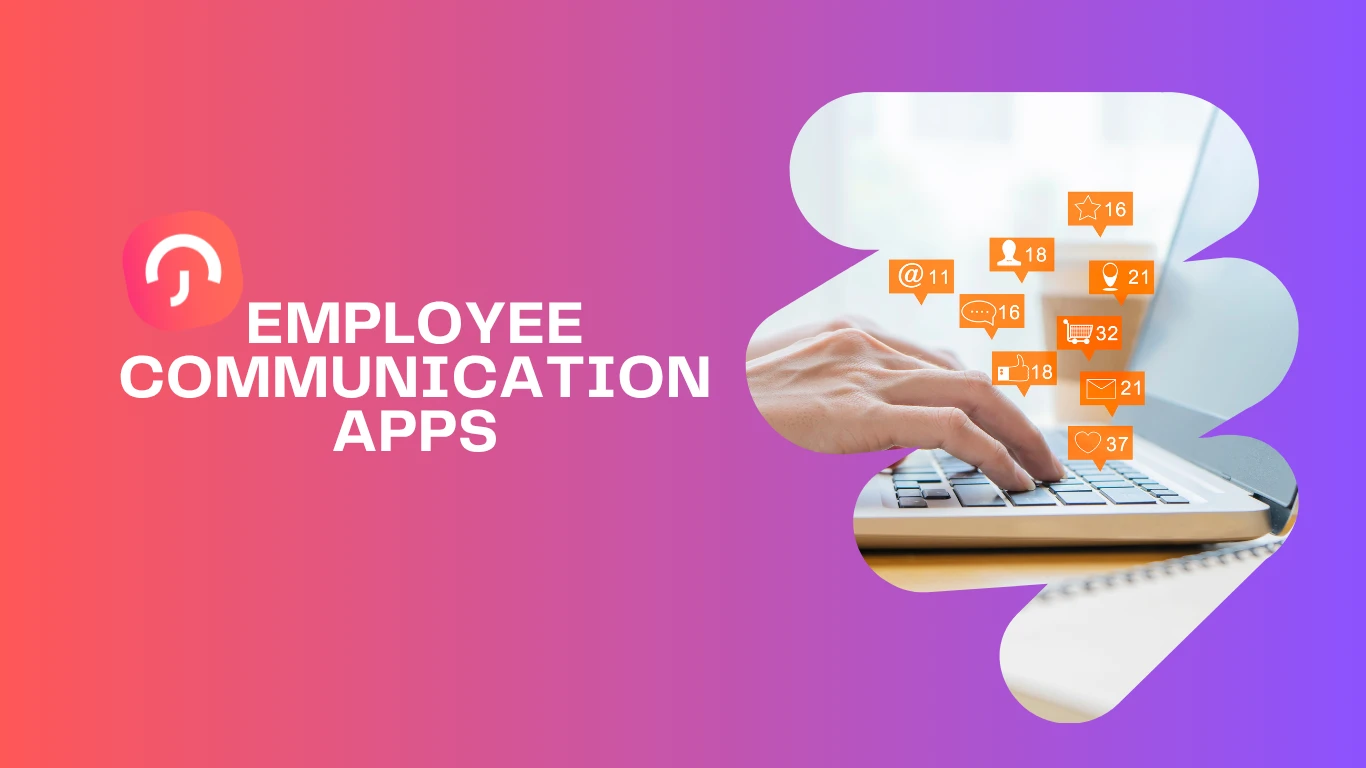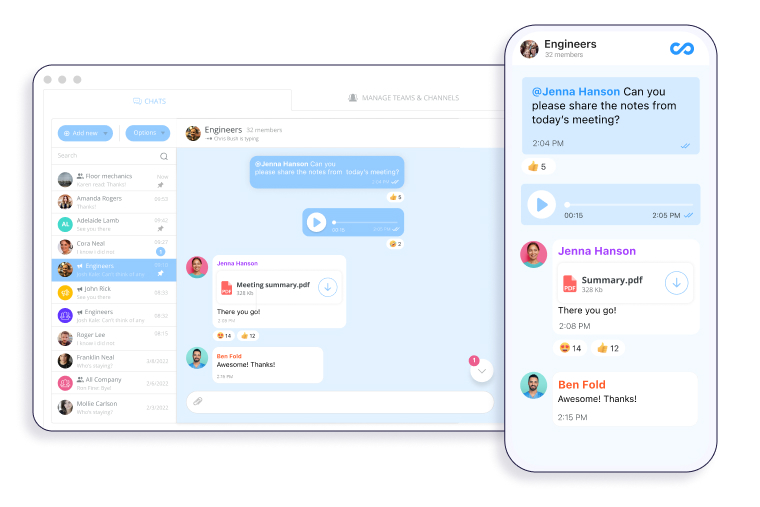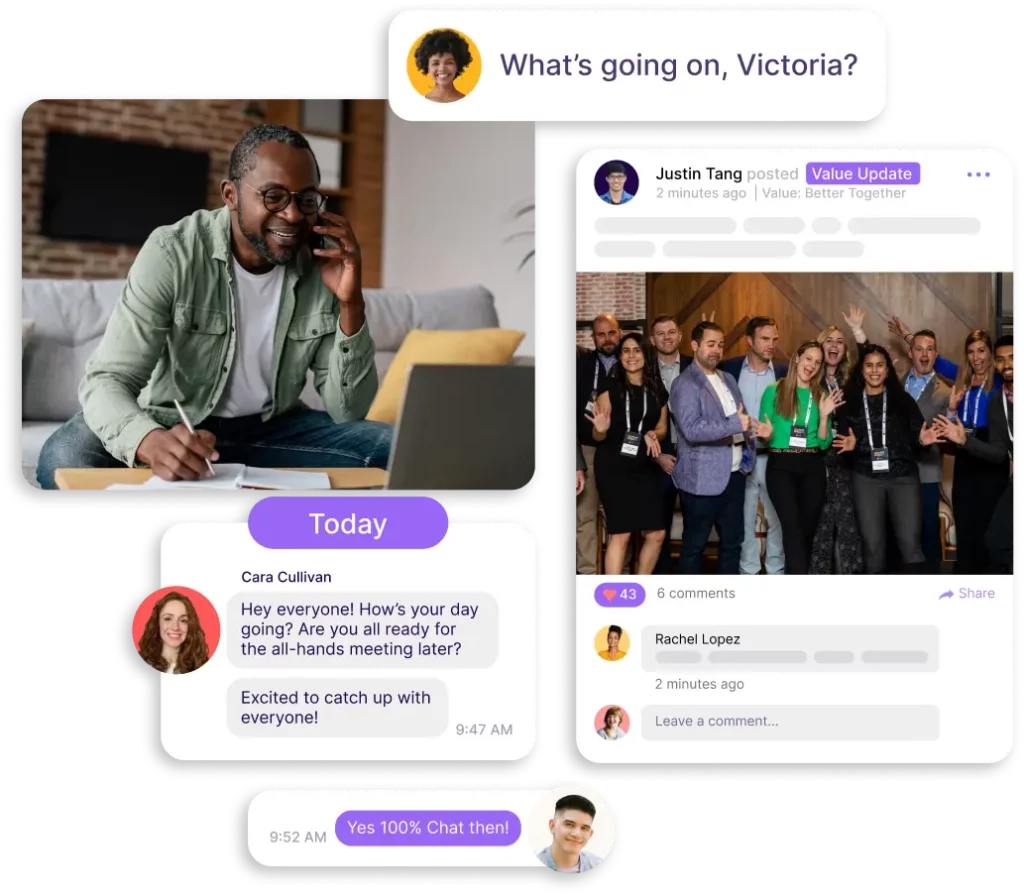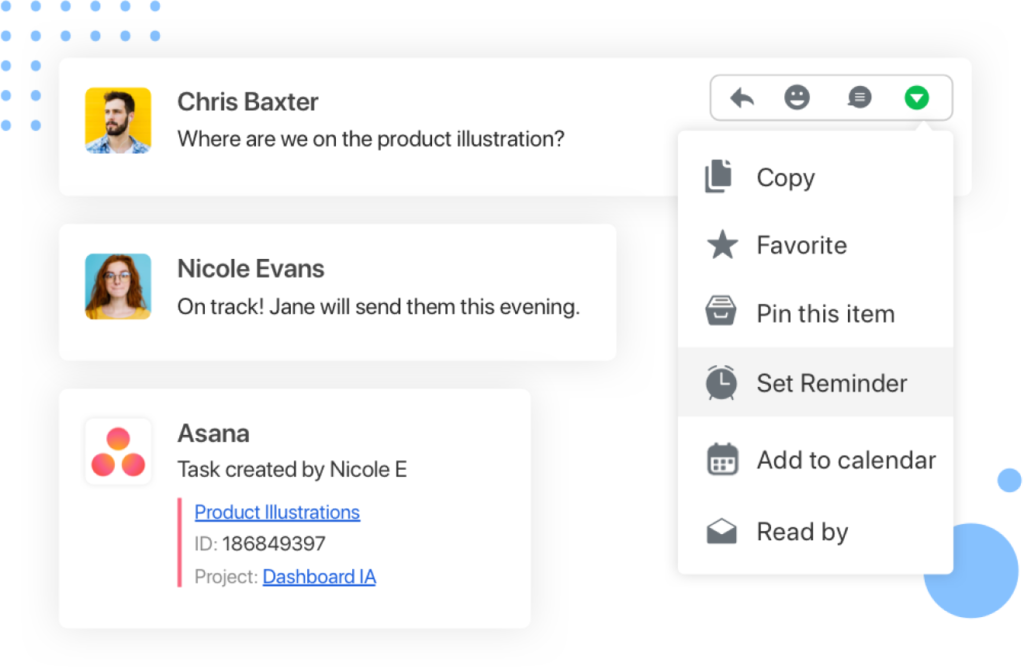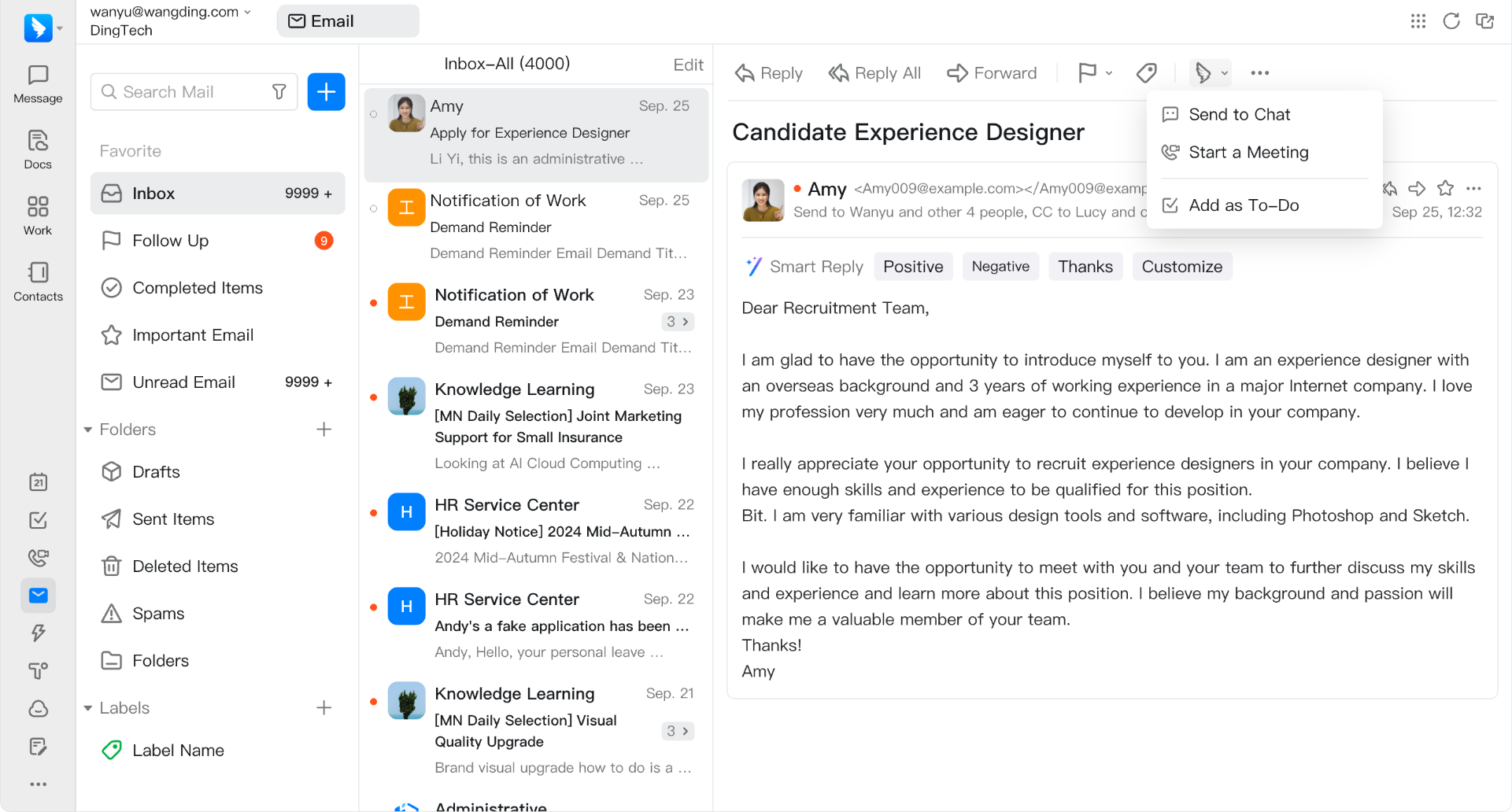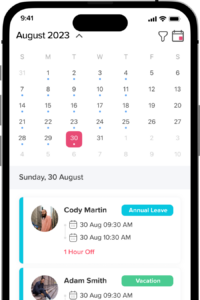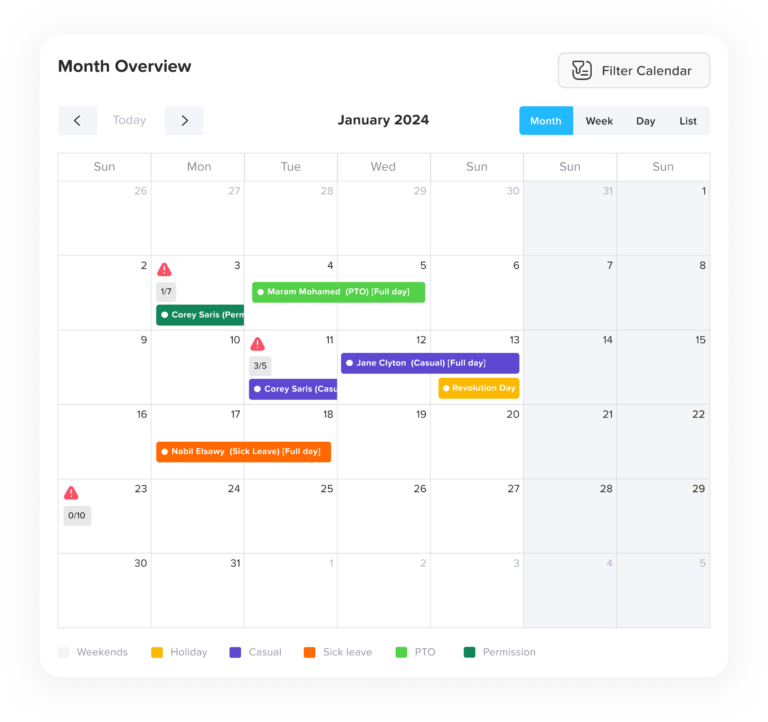Managing employee time off is one of the most critical aspects of running a business. From tracking vacation days to managing sick leave, ensuring compliance with labor laws, and maintaining team productivity, the process can quickly become overwhelming. Enter the Day Off App, the ultimate leave tracker designed to simplify and streamline your time off management needs.
Why Choose a Leave Tracker?
For years, businesses relied on spreadsheets, emails, or even paper based systems to manage employee leave. These outdated methods are prone to errors, time consuming, and often lead to confusion or miscommunication. A dedicated leave tracker like Day Off App eliminates these issues by providing a centralized, automated system for managing time off. Here’s why your team needs a modern leave tracker:
Improved Accuracy: Automates leave calculations, reducing human errors.
Time Efficiency: Cuts down on manual processes, freeing up HR for strategic tasks.
Transparency: Ensures employees and managers are on the same page about leave balances and policies.
Compliance: Helps businesses adhere to labor laws and company policies effortlessly.
What Sets Day Off App Apart?
The Day Off App is a powerful yet easy to use leave management solution designed for teams of all sizes. Whether you’re running a small business or managing a large organization, this platform provides everything you need to handle employee time off with ease and efficiency.
User Friendly Interface
One of the app’s greatest strengths is its simple, intuitive design. Employees can request leave in just a few taps, while managers receive instant notifications and approve or decline requests with a single click. Even those who are not tech savvy find the system easy to use, ensuring smooth adoption across the entire organization.
Flexible Leave Policies
Every company has its own approach to time off management, and the Day Off App adapts to them all. It supports a wide range of leave types, including vacation, sick leave, maternity, paternity, bereavement, and any custom categories your business may require. Policies are fully customizable, with options to define accrual rates, rollover rules, and multi level approval workflows so that your leave management reflects your exact company standards.
Real Time Leave Balances
Transparency is at the core of the Day Off App. Employees always have access to their current leave balances, eliminating the uncertainty that often comes with planning time off. Managers benefit from the same real time visibility, allowing them to assess availability, anticipate staffing needs, and prevent overlapping absences.
Streamlined Approvals
The app makes the approval process quick and efficient. Managers receive instant alerts for new leave requests and can approve or decline them in just one click. With a clear overview of upcoming absences, they can make confident decisions that balance employee needs with operational demands.
Seamless Calendar Integration
To keep everyone aligned, the Day Off App integrates effortlessly with popular calendar platforms such as Google Calendar and Outlook. Approved leaves are automatically synced to shared calendars, ensuring the entire team is aware of upcoming absences and allowing for smooth planning and coordination.
Mobile Accessibility
In today’s mobile first world, flexibility is essential. The Day Off App is available both through a web platform and a dedicated mobile application. Whether in the office, at home, or on the move, employees and managers can submit or manage leave requests anytime, anywhere.
Reporting and Analytics
Beyond day to day tracking, the Day Off App offers valuable insights into leave trends. Detailed reports allow managers and HR teams to identify peak vacation periods, monitor recurring sick leave patterns, and analyze leave usage by department or individual. These insights help businesses plan effectively, allocate resources wisely, and adjust policies where needed.
Benefits of Using Day Off leave tracker
Enhanced Productivity
By automating the leave management process, the Day Off App significantly reduces administrative burdens on HR teams. This allows them to dedicate more time to strategic initiatives rather than routine tasks. Managers also benefit from better resource allocation, ensuring that workflows remain uninterrupted even when multiple employees are on leave.
Boosted Employee Satisfaction
The Day Off App fosters a positive work environment by offering transparency and convenience. With clear leave policies and real time visibility of their balances, employees can plan time off with confidence and without unnecessary back and forth. This level of clarity not only reduces stress but also improves morale, resulting in a more motivated and engaged workforce.
Better Compliance
Navigating labor laws and leave regulations can be complex, especially when managing teams across different regions. The Day Off App helps organizations remain compliant with local requirements by ensuring that leave policies are accurately structured and consistently applied. This minimizes the risk of disputes, errors, or costly penalties, providing peace of mind for both HR teams and management.
Scalability
Whether you’re a small business planning for growth or a large enterprise managing multiple offices, the Day Off App adapts seamlessly to your needs. You can easily add new users, departments, and locations, as well as adjust policies as your organization evolves, all without disrupting daily operations.
Success Stories
Many companies from diverse sectors have adopted the Day Off App to transform the way they manage employee leave. Its flexibility and efficiency make it an ideal solution for organizations of all sizes and structures.
For instance, a fast growing tech startup reduced manual errors by 95% and saved more than 10 hours each week by automating leave administration. A nationwide retail chain gained valuable insights into leave patterns, enabling smarter staffing decisions during busy seasons and ensuring smooth customer service. Meanwhile, a leading nonprofit organization enhanced employee satisfaction by implementing customized leave policies designed to meet the specific needs of its workforce.
How to Get Started with Day Off leave tracker
Getting started with the Day Off App is fast, simple, and designed to fit seamlessly into your workflow. In just a few easy steps, your team will be fully set up and ready to go.
Step 1: Sign Up
Create your account directly on the Day Off App website. The process is quick and straightforward, with no technical expertise required.
Step 2: Set Up Your Policies
Customize your leave policies to fit your organization’s needs. Define accrual rates, rollover rules, leave types, and approval workflows so the system reflects your exact company standards.
Step 3: Invite Your Team
Add employees to the platform and guide them through a smooth onboarding process. The app’s intuitive design makes it easy for everyone to get started right away.
Step 4: Start Tracking
Once set up, you can begin managing leave instantly. Employees submit requests with ease, and managers can review and approve them in real time, all while maintaining full visibility into team schedules.
Frequently Asked Questions (FAQ)
Is the Day Off App suitable for small businesses, or is it primarily intended for large companies?
The Day Off App is designed to support businesses of every size. Whether you’re a small startup with just a few employees or a large enterprise managing hundreds of staff across multiple locations, the platform adapts seamlessly to your needs.
Can I customize leave types and policies to match my company’s requirements?
Yes. The Day Off App gives you full flexibility to create leave types and policies that reflect your organization’s standards. You can set custom accrual rates, rollover rules, leave categories, and multi level approval workflows to ensure the system aligns perfectly with your internal processes.
How do employees submit leave requests?
Employees can request leave easily through the mobile app or the web platform. The process is quick and intuitive, requiring just a few clicks. Managers are instantly notified and can approve or decline requests in real time, making the entire process fast and transparent.
Does the Day Off App integrate with calendars like Google Calendar or Outlook?
Yes. Approved leave requests are automatically synced with popular calendar platforms such as Google Calendar and Outlook. This keeps teams updated on upcoming absences and helps managers plan staffing schedules without the risk of conflicts.
What if an employee needs to request time off before they’ve accrued enough leave?
The Day Off App includes an “Allow Negative Balance” feature that lets employees submit requests even if they haven’t yet earned the full leave balance. This option provides greater flexibility for both managers and employees while ensuring requests are still documented and visible.
Is the Day Off App available on mobile devices?
Absolutely. The Day Off App is fully accessible via both a dedicated mobile app and a web based platform. This makes it easy for employees to submit requests and for managers to respond anytime, anywhere, whether at the office, working remotely, or on the go.
Can the Day Off App help with compliance?
Yes. The app is built to support compliance with regional labor laws and your organization’s policies. Automating leave tracking and ensuring consistency helps minimize the risk of errors, disputes, or penalties while keeping your business compliant.
How secure is employee data on the Day Off App?
Data security is a top priority. The Day Off App uses advanced encryption and industry leading security protocols to keep employee information safe, private, and accessible only to authorized users.
Can we transfer our existing leave records into the Day Off App?
Yes. You can easily migrate existing leave balances and historical data into the platform. Our support team is available to assist with the upload process, ensuring a smooth and hassle free transition.
How quickly can we get started with the Day Off App?
Setup is fast and straightforward. Most businesses are fully up and running within minutes. Simply create an account, customize your policies, invite your team, and start managing leave right away.
Conclusion
The Day Off App is more than just a leave tracker; it’s a comprehensive solution designed to simplify time off management while enhancing team productivity and satisfaction. Whether you’re looking to reduce administrative workloads, ensure compliance, or provide employees with a better leave experience, the Day Off App is the perfect choice for your team.
Don’t let outdated methods slow you down. Try the Day Off App today and take the first step towards smarter leave management!

